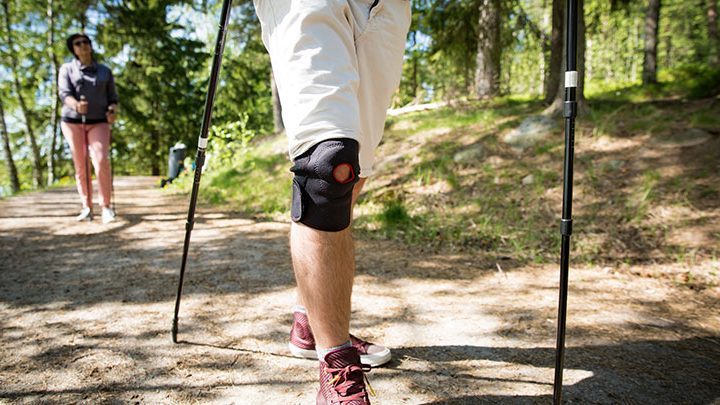Hiking as exercise for Arthritis
Hiking is good exercise for arthritis. The author shares tips on how to enjoy hiking, avoid the difficulties and enjoy nature

As an avid hiker in my youth it was something of a shock to me that with early onset osteoarthritis I might have to give up hiking as a sport.
The thought of no longer being able to get out in the wild, walking & climbing mountains was almost too much to bear. I realized that I would have to adjust my lifestyle. The pressure that hiking could place on my joints and knees as well as the damage that it could do to cartilage, could make osteoarthritis far worse, decades before others. Osteoarthritis is, after all, an irreversible condition.
I started researching to see if they were ways to continue hiking, and to do is a beneficial exercise for arthritis without damaging my cartilage even further. There were a number of articles that were all very scientific in nature around the causes of osteoarthritis. But I wanted something a little more practical that could help me continue hiking. I distilled what I learnt into the following easy rules for “hiking as positive exercise for arthritis”
Causes of arthritis
- Weight is a contributing factor Overweight people are at higher risk of cartilage damage as they place more weight on their joints and lower extremities.
- Previous existing trauma and damage can exacerbate the onset of osteoarthritis. If you’ve had an accident, such as a meniscus tear or any other injury which might have compromised this can result in damage which overtime can result of osteoarthritis.
- Inflammation and age As the body ages and damage occurs by trying to correct this. The inflammatory response from any damage causes pain in the joints and is another key component of osteoarthritis.
Hiking sensibly – exercise for arthritis
Minimise weight
By reducing any extra weight you carry, either by getting rid of your backpack or shedding those extra pounds, you can save a ton of pressure on your knees.
Instead of doing long multi-day hikes, consider doing shorter hikes and having your pack dropped at your destination for you, relieving yourself of the weight of your day pack.
If you need to lose some weight, check out this article which gives you all the facts about osteoarthritis and the huge benefits of weight loss
Pick your route
Though you might love picking more challenging trails, there are plenty of equally scenic trails with lower gradients that will get you to your destination and give you a great hike along the way. Plan your hikes to suit your condition and make sure that you enjoy the experience by not over stressing your knees. Don’t tackle unnecessarily steep trails, as they are even more work! You may want to consider strapping or bracing your knees to protect them against any injury.
Rest and recuperation
At the end of a long day rest up and apply cooling gels to your joints or take your anti-inflammatory medication. Resting will ensure that you can hike further into the future without injury. It will also reduce the potential for knee damage, which could lead to inflamed knee joints over time.
Braces and hiking poles
Many hikers don’t want to use these, but when used properly sets of poles can reduce the load on your knees by as much as 30%. In addition using poles gives you an upper body work out too. They will assist especially on uphill hikes. A knee brace will also help you to support the joint during strenuous climbs.